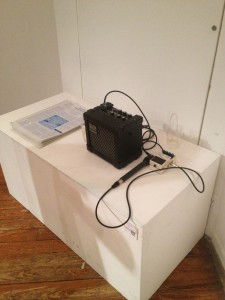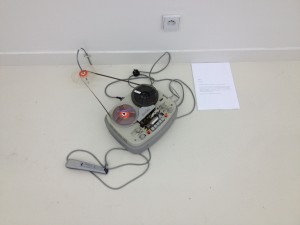Edward KIENHOLZ
(born in 1927; lives in Los Angeles) has recently resorted to plaques with engraved instructions for pieces to be executed at the purchaser’s expense. For this exhibition he has asked that the doors to the museum’s bathrooms be photographed, that these photographs be blown up life-size and that they be placed on the actual doors, but interchanged so that the men’s room will be designated as the women’s room and vice versa. Says Kienholz, « The environment inside is one that people generally get uptight about and if there’s any confusion it’ll shake them. »
(né en 1927; vit à Los Angeles) a récemment gravé sur des plaques des instructions pour réaliser des pièces aux frais de l’acquéreur. Pour cette exposition il a demandé à ce que les portes des toilettes du musée soit photographiées, que ces photographies soient imprimées à échelle 1 et placées sur les actuelles portes, mais interchangées de façon à ce que les toilettes des hommes soient désignées comme les toilettes des femmes, et vice versa. Kienholz dit, « l’environnement à l’intérieur est tel que les gens se sentent généralement tendus, et s’il y a la moindre confusion ça les secouera »


